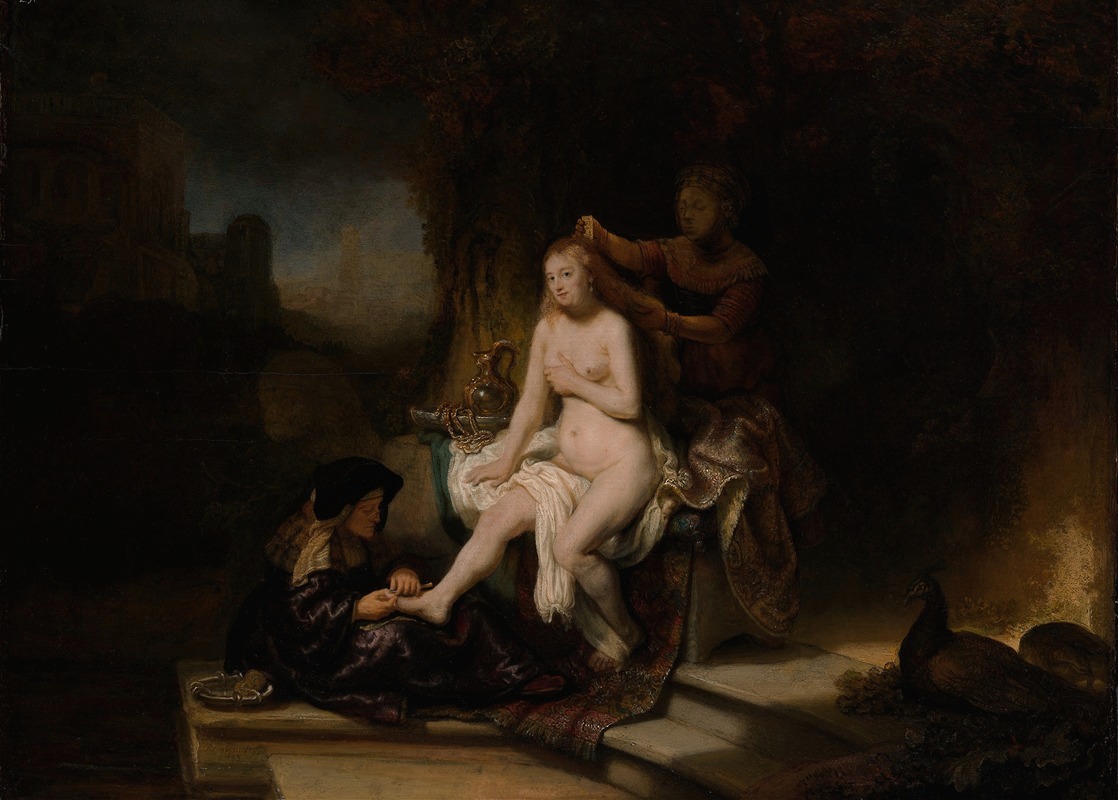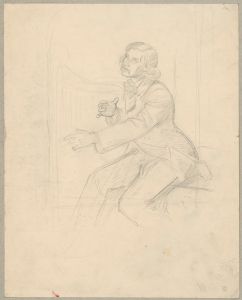
The Toilet of Bathsheba
A hand-painted replica of Rembrandt van Rijn’s masterpiece The Toilet of Bathsheba, meticulously crafted by professional artists to capture the true essence of the original. Each piece is created with museum-quality canvas and rare mineral pigments, carefully painted by experienced artists with delicate brushstrokes and rich, layered colors to perfectly recreate the texture of the original artwork. Unlike machine-printed reproductions, this hand-painted version brings the painting to life, infused with the artist’s emotions and skill in every stroke. Whether for personal collection or home decoration, it instantly elevates the artistic atmosphere of any space.
"The Toilet of Bathsheba" is a painting by the renowned Dutch artist Rembrandt van Rijn, created in 1643. This artwork is a part of Rembrandt's extensive body of work that explores biblical themes, a common subject for the artist, who is celebrated for his ability to convey deep human emotion and complex narratives through his paintings.
The painting depicts the biblical figure Bathsheba, a character from the Old Testament. Bathsheba is known for her beauty and her story involving King David, who saw her bathing and was captivated by her. This led to a series of events that had significant consequences for both Bathsheba and David. In Rembrandt's portrayal, Bathsheba is shown in a moment of private reflection, a theme that Rembrandt often explored in his work.
Rembrandt's "The Toilet of Bathsheba" is notable for its intimate and contemplative portrayal of the subject. The painting captures Bathsheba in a moment of solitude, emphasizing her vulnerability and the weight of her situation. Rembrandt's use of light and shadow, a technique known as chiaroscuro, enhances the emotional depth of the scene, drawing attention to Bathsheba's expression and the textures of her surroundings.
The composition of the painting is carefully constructed to focus the viewer's attention on Bathsheba. Rembrandt's mastery of detail is evident in the rendering of her skin, the fabric of her clothing, and the subtle play of light across the scene. The artist's ability to convey the psychological complexity of his subjects is a hallmark of his work, and "The Toilet of Bathsheba" is a prime example of this skill.
This painting is part of a larger tradition of depicting Bathsheba in art, a subject that has been explored by many artists over the centuries. Rembrandt's interpretation is distinguished by its focus on the inner life of the character, rather than the more sensational aspects of her story. This approach reflects Rembrandt's broader interest in the human condition and his ability to capture the essence of his subjects with empathy and insight.
"The Toilet of Bathsheba" is housed in the Louvre Museum in Paris, where it is part of the museum's extensive collection of works by Rembrandt. The painting is an important example of Rembrandt's mature style and his ability to convey complex narratives through his art. It continues to be studied and admired for its technical excellence and its profound emotional impact.
In summary, "The Toilet of Bathsheba" by Rembrandt van Rijn is a masterful depiction of a biblical story, rendered with the artist's characteristic attention to detail and emotional depth. The painting remains a significant work within Rembrandt's oeuvre and a testament to his enduring legacy as one of the greatest painters in Western art history.


















